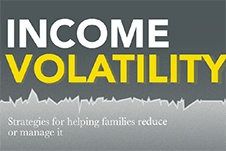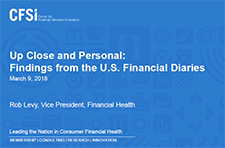Discover financial empowerment resources
Discover financial empowerment resources
For most households in America, financial shocks are inevitable. The car will break down. The house will need a repair. A key earner for a household will be laid off. These shocks can be devastating to household finances. And while the COVID-19 pandemic, which we are still recovering from, was a...

Use this calculator by the Ontario Securities Commission to estimate your positive or negative monthly cash...

In this report, the JPMorgan Chase Institute uses administrative bank account data to measure income and spending volatility and the minimum levels of cash buffer families need to weather adverse income and spending shocks. Inconsistent or unpredictable swings in families’ income and expenses...

This report explores the implications of new technologies on Canada’s economy and labour market and the adequacy of current social programs and policies supporting...

Short-term cushions are key to longer-term financial security and well-being. This report shines a light on the central role that short-term financial stability plays in a person’s ability to reach broader financial security and upward economic mobility, a measurement of whether an...

In this video presentation David Mitchell from the Aspen Institute explains strategies for mitigating and preventing income volatility at the household level. This presentation was given at the Prosper Canada Policy Research Symposium on March 9, 2018. Read the slide deck that accompanies...

In this video presentation Rob Levy from the Center for Financial Services Innovation (CFSI) shares some of the findings from the U.S. Financial Diaries project. He explains how the households in the study experience multiple "spikes" and "dips" in income and spending over the course of a single...

In this video presentation Fiona Greig from the JP Morgan Chase Institute explains what banking data can tell us about income volatility in the United States. This presentation was given at the Prosper Canada Policy Research Symposium on March 9, 2018. Read the slide deck that accompanies...

Income inequality in the United States is growing, but the most common economic statistics hide a significant portion of Americans’ financial instability by drawing on annual aggregates of income and spending. Annual numbers can hide fluctuations that determine whether families have trouble...
As of 2011, 43 percent of families endured swings of more than 25 percent. Such fluctuations, also called income volatility, make it difficult for families to plan, pay regular expenses, save, or pay down debt. But little research has investigated and compared the impact of changes in year-to-year...
The Zambia Financial Diaries is a year-long panel study that collects data each week on all transactions performed by respondents - all sales and purchases, income earned from informal or formal labor, uses of financial tools, and exchanges of in-kind goods. The purpose of the study is to develop...
When money is tight, consumers often pay bills in a way that makes the problem worse, with late fees, penalties, and higher interest rates. Research shows that consumers have many reasons for their actions. To gain insight into why it’s so hard for consumers to organize and manage their financial...
